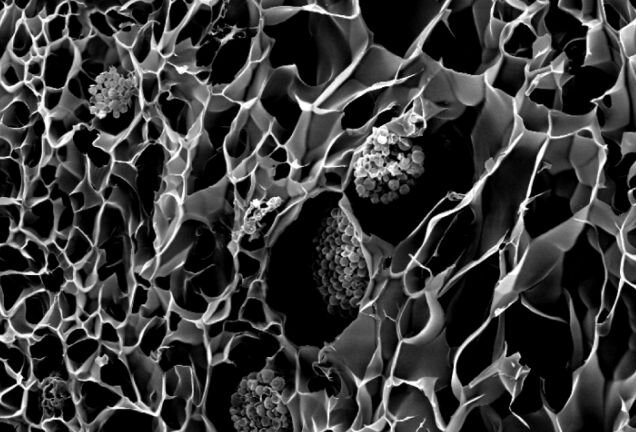![Microscopic view of 3D printed coral structures [Source: Cambridge University]](https://fabbaloo.com/wp-content/uploads/2020/05/image-asset_img_5eb0653e6555b.jpg)
Microscopic view of 3D printed coral structures [Source: Cambridge University]
I thought I’d heard all I needed to know about 3D printed corals some years ago, but I was wrong.
Some years ago, D-Shape, a then-emerging construction 3D printer manufacturer, demonstrated a way to 3D print coral reefs using their concrete printing process.
Essentially they developed a rough design for a coral-like concrete structure, then 3D printed and dropped them in the ocean in an appropriate place. The thinking was that the natural world would soon occupy the new habitat and trigger the development of an ecosystem.
This approach has been used previously by sinking expired ships to form “artificial reefs”. They seem to be somewhat successful. At least until I read a story from Cambridge University, where they have developed, with folks from UCSD, a much more effective 3D printed coral reef concept that uses living matter.
The idea is that a more lively ecosystem could be created by establishing biology at the lowest level first. That is to say, encourage the growth of algae within the reef structure on top of which other higher levels of flora and fauna can grow. This could approach the very high levels of efficiency produced by natural coral reefs.
Bionic Coral Reef
They’ve developed what they call a “bionic” coral reef. It’s a process that attempts to optimize light distribution.
Wait, light distribution? What’s that about?
It turns out the highly complex geometries found in living coral are actually designed to optimize the light that falls through the water onto the structure. This is the coral’s way of maximizing the surface area exposed to light to enable optimal growth of the algae held by the tiny coral animals in the colony.
The researchers attempted to replicate this approach by first capturing actual coral structures using optical coherence tomography scanning to obtain the necessary geometries.
Their 3D printing process uses “photosynthetic material that mimics coral tissue and skeleton”. This is interesting as they are printing both living and non-living matter to produce a functional structure.
They explain some of the complexities involved:
“The photon distribution is mainly managed by the aragonite skeleton, where light leaks out of the skeleton and into coral tissue, supplying photons deep within the corallite4,10. In addition, light can enter the coral tissue more easily than it can escape, as low angle upwelling light is trapped by internal reflection due to refractive index mismatches between the coral tissue and the surrounding seawater11. We mimicked these light management strategies and designed a bionic coral made out of sustainable polymers for enhanced microalgal light absorption and growth.”
And it’s not just the geometry in question here. The researchers had to perform significant work to identify the correct type of algae to use. It’s a fascinating contrast to typical 3D printing projects where only one material is usually in question.
On top of all that, the bioprinting process had to be very fast to avoid death of the print material, another aspect usually not found in conventional 3D printing.
Their work involved producing centimeter-scale test prints, while a commercial operation that intended to deposit these prints to form an artificial reef would necessarily be vastly larger. That poses some questions about the scalability and efficiency of the process, but at least they have succeeded in literally 3D printing a living coral reef.
Via Cambridge University and Nature

